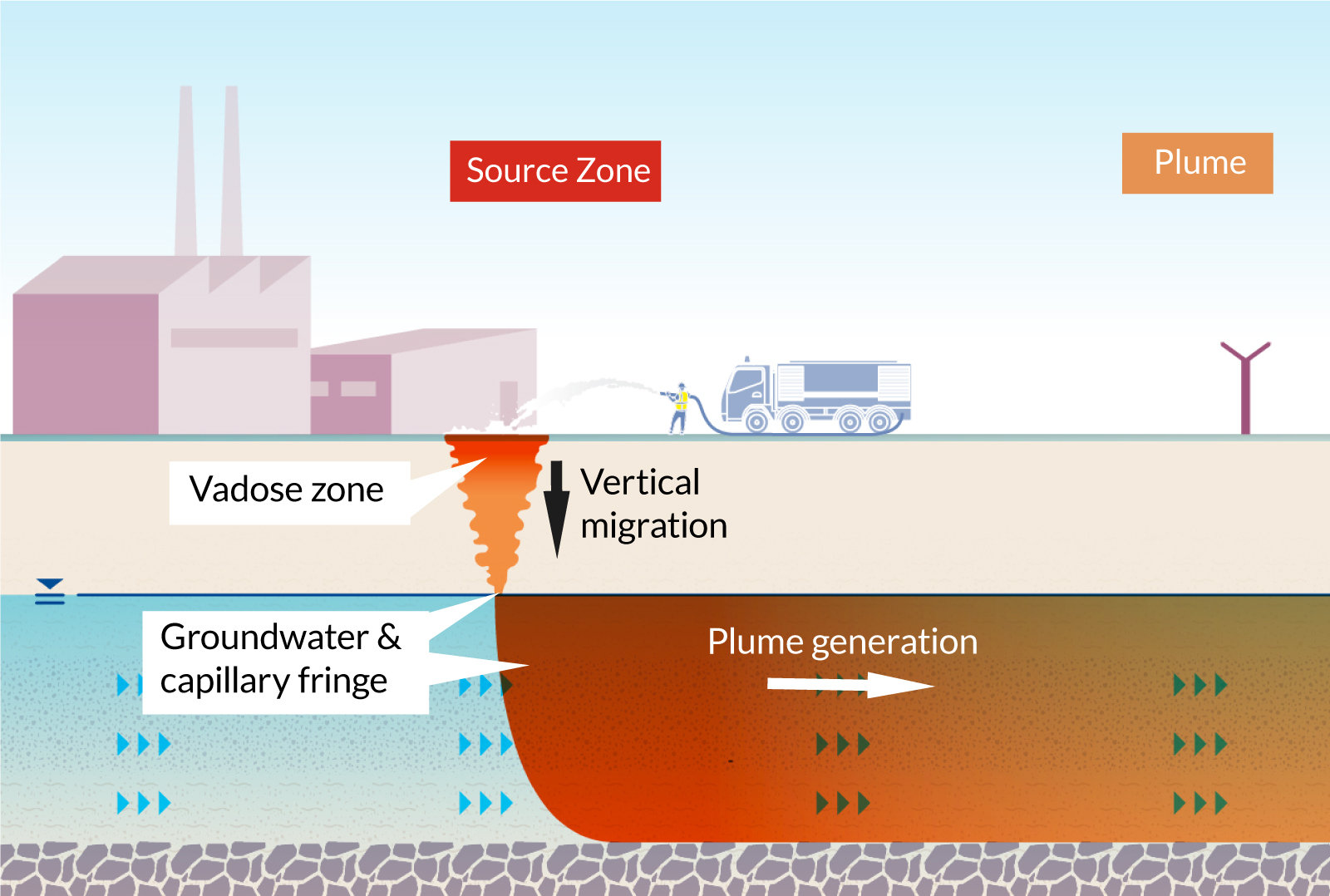Best Practices for PFAS Waste Management at Treatment Facilities
Ingenious PFAS Therapy Solutions for Safer Water
The raising prevalence of PFAS contamination in water supplies demands an essential examination of innovative treatment options. In addition, emerging bioremediation methods supply a more lasting method to dealing with PFAS challenges. pfas management.
Review of PFAS Contamination
PFAS contamination has emerged as a considerable ecological and public wellness problem. Per- and polyfluoroalkyl substances (PFAS) are a group of artificial chemicals recognized for their persistence in the environment and human body, leading them to be typically described as "for life chemicals." These substances have actually been widely utilized in various markets, including firefighting foams, water-repellent textiles, and food packaging, mostly due to their water- and grease-resistant buildings.
The extensive use of PFAS has caused their discovery in soil, water products, and also in the blood of human beings and pets. Studies have actually connected PFAS exposure to numerous health and wellness issues, including developing impacts in infants, body immune system disorder, and different forms of cancer. In addition, the ecological perseverance of these compounds complicates their degradation and removal, raising worries concerning lasting environmental influences.
Regulatory bodies are increasingly applying rigorous guidelines to check and lower PFAS degrees in drinking water and other environmental tools. As understanding of PFAS contamination expands, it has become imperative for neighborhoods and industries to look for effective therapy solutions to minimize exposure and guard public health.
Advanced Purification Technologies
As the seriousness to address PFAS contamination magnifies, advanced filtration technologies have emerged as an essential component in the remediation efforts aimed at removing these consistent chemicals from water sources. These technologies leverage sophisticated systems to successfully target and catch PFAS compounds, which are notoriously immune to standard therapy techniques.
One of one of the most appealing strategies is making use of granular triggered carbon (GAC), which adsorbs PFAS molecules due to its high surface area and porous structure. This method has actually been extensively carried out in both local and industrial settings, showing considerable reductions in PFAS concentrations. In addition, ion exchange resins have gained traction, especially created to precisely bind PFAS ions from water, hence promoting their removal.
Membrane layer purification technologies, such as reverse osmosis and nanofiltration, likewise reveal efficiency in PFAS elimination by literally dividing contaminants from water - pfas management. These systems can achieve high levels of purity, making them suitable for drinking water applications
Chemical Treatment Advancements
Countless chemical therapy innovations are being checked out to properly address PFAS contamination in water materials. One promising technique involves the usage of sophisticated oxidation procedures (AOPs), which utilize effective oxidants such as ozone, hydrogen peroxide, or chlorine dioxide integrated with UV light to break down PFAS substances into much less dangerous compounds. This approach has shown effectiveness in laboratory setups, revealing potential for scalability in real-world applications.
Another innovative technique is the advancement of ion-exchange resins especially designed to target PFAS. These resins can uniquely adsorb PFAS compounds from water, enabling their elimination throughout therapy procedures. Recent developments have improved the efficiency and capacity of these resins, making them a positive choice for water treatment centers.
Additionally, researchers are examining making use of chemical agents like persulfate and ferrous ions to improve the deterioration of PFAS in polluted water. These agents can induce chain reaction that facilitate the breakdown of relentless PFAS substances.
Arising Bioremediation Techniques
Current improvements in chemical treatment advancements have paved the means for exploring bioremediation methods as a viable choice for attending to PFAS contamination. Bioremediation utilizes the all-natural metabolic processes of bacteria to degrade or transform toxins, making it an appealing method for tackling consistent impurities like PFAS.
Emerging methods in bioremediation consist of the use of genetically engineered bacteria that can especially target and break down PFAS substances. These microbial strains are being created for their enhanced degradation capacities, enhancing the performance of the remediation process. In addition, researchers are checking out the potential of plant-assisted bioremediation, where specific plant varieties may uptake and withdraw PFAS from contaminated soil and water.
One more promising technique is the application of bioaugmentation, which involves presenting useful microbes into infected environments to boost the deterioration of PFAS. This method can promote quicker removal timelines and enhance total effectiveness.

Regulative Structures and Standards
An extensive governing structure is crucial for effectively managing PFAS contamination and guaranteeing public health protection. The enhancing recognition of per- and polyfluoroalkyl substances (PFAS) as environmental toxins has actually triggered different federal and state companies to develop standards that control their presence in water products. The United State Environmental Defense Company (EPA) has actually developed wellness advisories and is functioning towards establishing enforceable limitations for PFAS in alcohol consumption water.
State-level regulations vary significantly, with some states embracing stricter guidelines than those suggested by the EPA. These guidelines typically consist of optimum pollutant levels (MCLs) for particular PFAS compounds, surveillance requirements, and reporting commitments for water utilities. In addition, emerging frameworks concentrate on the remediation of contaminated websites, highlighting the requirement for efficient treatment technologies.

Final Thought
Finally, the advancement and implementation of innovative PFAS treatment remedies are crucial for resolving the pervasive issue of water contamination. Advanced filtering modern technologies, chemical go to my blog treatments, and arising bioremediation strategies collectively offer a complex technique to efficiently reduce and weaken PFAS levels. As governing frameworks remain to advance, integrating these technologies will certainly be vital to guard look at here now public wellness and bring back the integrity of contaminated water resources, inevitably adding to a cleaner and safer environment.